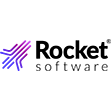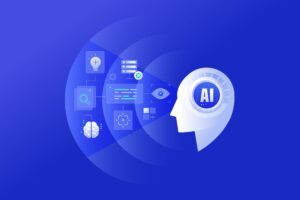
Lucidworks Report Breaks Down What It Takes to Win with GenAI

(Shutterstock AI Image)
Only 15% of companies are effectively using GenAI today, and they’re seeing up to 2x higher performance in key metrics like conversion and engagement compared to peers still relying on older tools. At the same time, 44 % of organizations have yet to adopt even basic AI-powered search or product recommendations. These numbers highlight just how uneven the current state of AI adoption is across industries..
These findings come from Lucidworks’s 2025 Generative AI Benchmark Report, which evaluated more than 1,100 companies using an autonomous AI agent named Guydbot, alongside survey insights from over 10,000 users. While the survey captured how people experience GenAI features, the agent tested live websites and digital touchpoints across 48 industries to assess what companies have actually deployed in the real world.
Based on observed capabilities, the report groups companies into four cohorts: Achievers, who are delivering clear results with GenAI; Builders, who are nearly there but still stabilizing core systems; Climbers, who are experimenting without the right foundation; and Spectators, who have not yet implemented GenAI in any meaningful way.
While these four cohorts vary in GenAI maturity, the biggest differences aren’t just in the features they offer; they show up in how each group approaches execution. Achievers are not chasing trends or launching chatbots for show. Instead, they’ve focused on integrating GenAI into core workflows that are built on clean, structured data. Their features are often practical, such as smarter search, personalized discovery, and better navigation.
The report notes that more than 70% of Achievers support hybrid retrieval and at least one form of semantic ranking. Builders are not far behind, but many are still working through gaps in their systems: data quality issues and fragmented tools. About half have launched some kind of GenAI feature, but it often sits on top of older infrastructure, which limits its impact.
Climbers fall into a large middle group. They’re visibly experimenting, usually starting with GenAI-powered chat or Q&A, but the experience often feels disconnected. Without the right foundation, the technology struggles to deliver. While Spectators make up nearly half of all companies in the study, they are the furthest behind. Fewer than one in five have adopted even basic tools like vector search, and many still rely entirely on static content and rules-based systems.
“The Climbers cohort reveals perhaps the most important lesson from our research: implementing advanced AI without mastering the essentials is like building a penthouse on a weak foundation,” stated Mike Sinoway, CEO, Lucidworks.
“Companies that balance ‘one for them, one for you,’ e.g. implementing customer-facing innovations while simultaneously strengthening foundational capabilities, are the ones that ultimately become Achievers. Each capability cohort represents not just a current state, but a strategic choice about your AI implementation journey.”
Sinoway’s point about mastering the essentials before layering on advanced features applies directly to how companies manage their data. What separates the more advanced companies from the rest often comes down to data quality.
Achievers are not just deploying GenAI, they’re feeding it the right inputs. Their systems are built on clean, multilingual, and vector-ready datasets that allow GenAI tools to retrieve, interpret, and respond effectively. Companies in the lower tiers may have access to similar models, but without the right data architecture behind them, the experience breaks down quickly.
The report also outlines 24 capabilities that define the maturity curve for GenAI, grouped into four stages from foundational to transformative. Some of the most advanced companies are experimenting with agentic AI, which refers to tools that can take action across systems without direct input. But these features only work when the basics are already in place. Without clean data, structured content, and integrated workflows, even the smartest tools can fall flat.
That’s why the report recommends a dual-track strategy, which involves building customer-facing GenAI features while simultaneously strengthening the backend systems that support them. Leading companies aren’t just launching AI-powered search or chat, they’re also investing in content structure, system integration, and governance behind the scenes. It’s this coordinated approach that allows GenAI to deliver real-world results.
This approach isn’t evenly adopted across the board. The report highlights a clear divide between sectors, with 41% of B2C companies qualifying as Achievers, compared to just 31% of B2B organizations. Consumer-facing brands have been quicker to bring GenAI into their customer experiences, while many B2B firms are still working through foundational issues. This gap is not just a benchmark; it points to both a risk for slower movers and a window of opportunity for those ready to catch up.
Lucidworks recommends that, to move forward, analytics leaders should focus on building a solid foundation before scaling GenAI. The report highlights cases like Klarna’s recent setback, where the fintech firm had to rehire staff after replacing 700 roles with AI due to a decline in service quality. The real advantage will go to companies that are able to balance ambition with wisdom, as one without the other is unlikely to deliver lasting success.
Related Items
LLMs and GenAI: When To Use Them
The Future of GenAI: How GraphRAG Enhances LLM Accuracy and Powers Better Decision-Making
GenAI Adoption: Show Me the Numbers





























